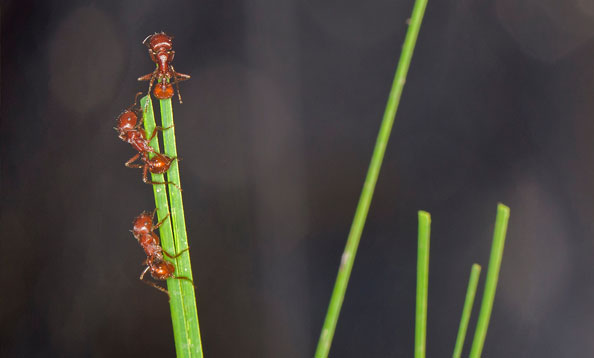Red Harvester Ant
Pogonomyrmex barbatus

Fascinating Facts
- Red harvester ants are often mistaken for fire ants, but are not related to any fire ant species, native or introduced.
Physical Characteristics
Workers of the red harvester ant colonies have long bodies, 1/4 to 1/2-inch long, and range in color from red to dark brown. They have square heads and no spines on their bodies. Winged males and female swarmers are larger than worker ants.
Habitat/Diet
Red harvester ants are common in the southwest United States. The main food source for red harvester ants usually consists of seeds, which they hoard in great numbers, hence their name.
Social Behavior
They have a powerful sting which they are not shy about using. Their sting is quite painful and best avoided. In the evening, a few Pogonomyrmex barbatus workers will usually seal the nest entrance with gravel and twigs to keep nighttime intruders out of the nest.
Winged males and females swarm, pair and mate. Males soon die and females seek a suitable nesting site. After dropping her wings, the queen ant digs a burrow and produces a few eggs. Larvae hatch from eggs and developed through several stages (instars). Larvae are white and legless, shaped like a crookneck squash with a small distinct head. Pupation occurs within a cocoon. Worker ants produced by the queen ant begin caring for other developing ants, enlarge the nest and forage for food.
Status In The Wild
Red harvester ants are common and not endangered.
Other
They can be found at the Insect Zoo.
















